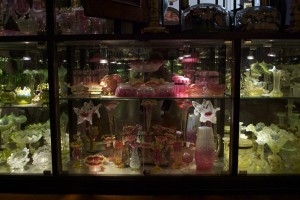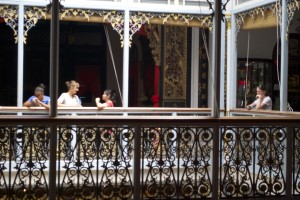A few weeks ago as part of our Religious Experiences class, we had a visit to a main Mosque in town. The outing took most of the afternoon and started with a vegetarian Indian lunch which was delicious as usual.
After lunch we visited the Peranakan museum. The word Peranakan is used to describe the Chinese traders who moved to Malaysia long before the peninsula was colonized by Europeans. Because Peranakans lived here for so many generations, their culture was an amalgamation of China and Malaya. Once Chinese workers started arriving as labor resources mainly for the British, the Peranakan culture somewhat disappeared and was absorbed into the larger Chinese culture. What remains is sometimes called Baba/Nyonya (respectively the masculine and feminine identifiers of this ethnicity) and is most present as cuisine. The Peranakan museum is a traditional Baba home decorated by a Chinese business man at the end of the 19th century. It’s a very aesthetic place, and we all enjoyed taking pictures there.

There were vast numbers of trinkets and turn of the century finery everywhere at the Peranakan museum.
Afterwards we went to Masjid Kapitan Kling. Masjid is the word used for Mosque and Kapitan Kling was a prominent Indian Muslim when the neighborhood was established almost 200 years ago. While we were there, we witnessed one piece of a marriage ceremony, which was the solemnization of the marriage. The bridegroom and male relatives were present and the bridegroom had to say a very specific phrase to the kadhi, who is an officer of the religious court. Some female relatives were sitting a little ways away. I was told this has to do with the tradition of not seeing one’s spouse before the wedding, hence the men and women wouldn’t sit together.
We also witnessed late afternoon payer, which only lasted maybe five or ten minutes but before hand we had a tour of the mosque and an introduction to their practices while at the mosque. It was really fascinating because while many of us are used to and comfortable touring churches, I don’t think anyone had been in a mosque before.
We had been asked to coverup as a sign of modesty and respect, which for males meant being covered from knees to navel and for women only exposing their faces, hands, and feet. Some of the women chose to bring their own scarf and others borrowed those which the mosque had on hand. The mosque also had extremely fashionable purple lab coats to wear over cloths so that people could wear other things around town for the day.


